How To Improve Indoor Air for Better Skin?
You can significantly enhance your skin health by improving the quality of your indoor air. Poor indoor air quality can lead to skin irritations and aggravate existing conditions like eczema or acne. By incorporating natural solutions into your environment, you not only create a healthier atmosphere but also promote a more radiant complexion. In this guide, you will discover practical tips and strategies to elevate your indoor air quality, ensuring that your skin benefits from a cleaner, fresher environment.
Table of Contents
Key Takeaways:
- Air Purification: Using air purifiers can significantly reduce indoor pollutants, helping to enhance skin health.
- Humidity Control: Maintaining optimal humidity levels prevents skin dryness, promoting a healthier complexion.
- Plant Benefits: Incorporating indoor plants improves air quality and adds moisture, contributing to better skin hydration.
- Ventilation: Ensuring proper airflow in your home can prevent stagnation, reducing allergens and irritants affecting the skin.
- Natural Cleaning Products: Opting for non-toxic cleaners minimizes exposure to harmful chemicals that can negatively impact skin health.
Types of Indoor Air Pollutants
While understanding the types of indoor air pollutants is necessary in promoting healthier living spaces, these pollutants can significantly affect your well-being. Common indoor air pollutants can include allergens, volatile organic compounds (VOCs), and particulate matter. Here are some typical indoor air pollutants to be aware of:
| Pollutant Type | Description |
| Dust Mites | Microorganisms that thrive in bedding, carpets, and upholstered furniture. |
| Volatile Organic Compounds (VOCs) | Emitted as gases from certain solids or liquids, commonly found in products like paints and cleaners. |
| Pet Dander | Fine particles from animals that can trigger allergic reactions. |
| Mold Spores | Fungi that can grow in damp areas, releasing spores into the air. |
| Cigarette Smoke | A mixture of toxic substances that can linger in the air and surfaces long after smoking. |
Assume that by identifying these pollutants, you can take steps towards creating a healthier indoor environment.
Common Sources
For many people, everyday items in your home can be a source of indoor air pollutants. Common sources include cleaning products, construction materials, and upholstered furniture. Inadequate ventilation can further exacerbate the problem, causing harmful toxins to accumulate indoors. It’s necessary to be conscious of where you source products as some may have hidden toxins that can contribute to indoor air pollution. For tips on reducing indoor toxins, explore Top 7 Ways to Improve Indoor Air Quality.
By being proactive and choosing eco-friendly and low-VOC options, you can significantly reduce the amount of harmful substances present in your indoor air. Regular cleaning and maintenance also play vital roles in minimizing the sources of pollutants and promoting a cleaner living environment. For eco-friendly tips, check out 5 Best Non-Toxic Cleaning Products for Your Home.
Impact on Skin Health
Indoor air pollution affects your health in more ways than you may realize. Indoor air can contain harmful elements that, when inhaled or absorbed through your skin, can lead to various skin issues such as irritation, eczema, and allergic reactions. The presence of volatile organic compounds (VOCs), for example, can create a toxic environment that exacerbates skin sensitivity and triggers inflammatory responses. To learn more about protective strategies, visit 7 Tips for Protecting Your Skin from Environmental Damage.
The effects of indoor air pollutants may vary from person to person, but staying informed about these detrimental aspects can help you make better choices. For those with sensitive skin, the long-term repercussions of constant exposure to these pollutants can be alarming, leading to skin conditions that require medical intervention. Maintaining a clean, well-ventilated space and minimizing exposure to sources of pollution can promote healthier skin and overall well-being. For advice on ventilation, explore 5 Effective Ways to Improve Home Ventilation.
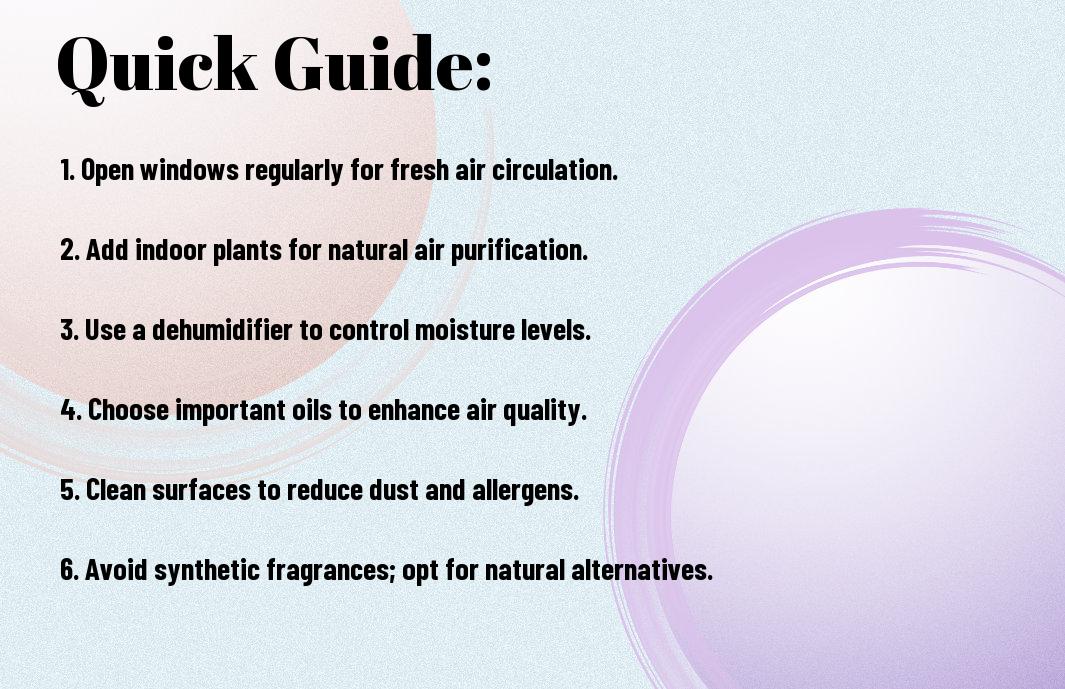
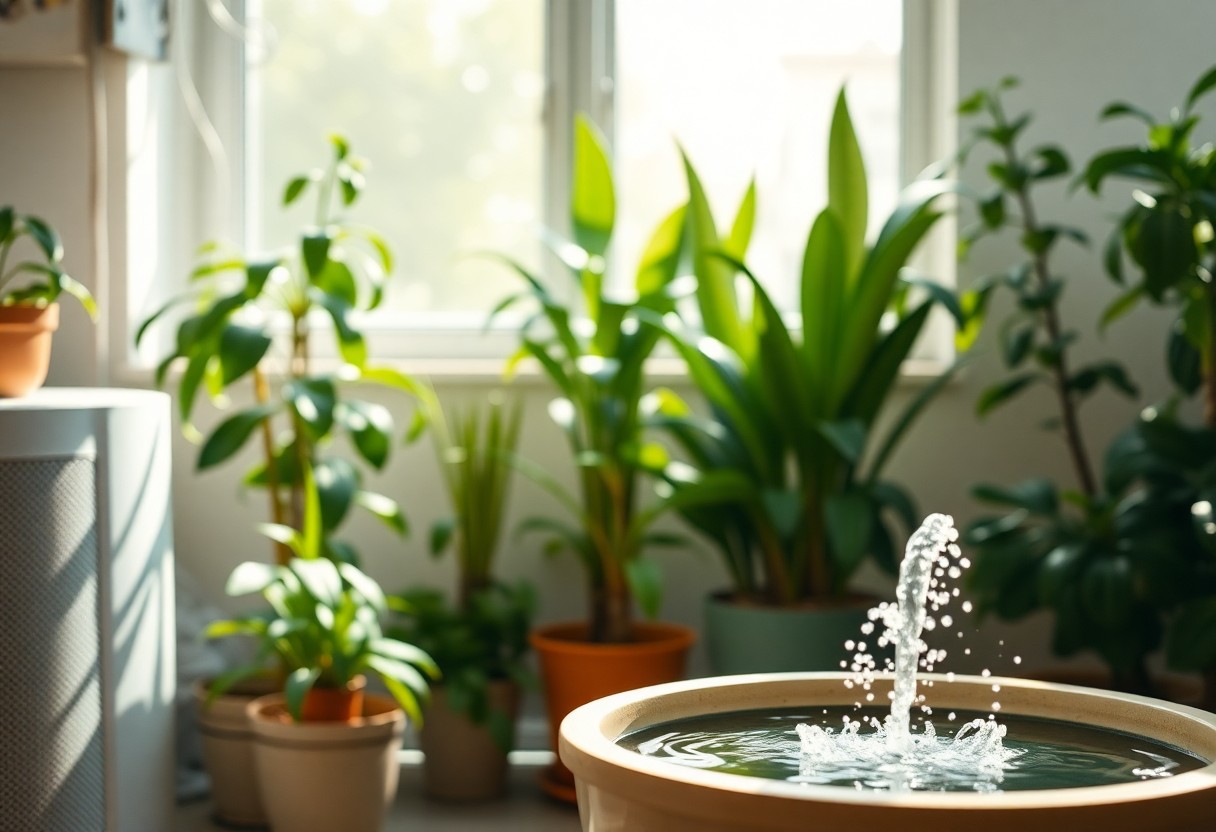
Factors Affecting Indoor Air Quality
The quality of your indoor air plays a significant role in your skin’s health and overall well-being. Various factors contribute to indoor air quality, and recognizing them can empower you to create a healthier environment. Some key factors include:
- Humidity levels
- Ventilation
- Pollutants
- Temperature
This awareness will help you make informed choices about enhancing your indoor space.
Humidity Levels
Indoor humidity levels can greatly influence your skin’s condition. When the humidity is too low, it can lead to dry skin, triggering irritation and flakiness. Conversely, excessively high humidity can promote mold growth, which can cause skin allergies and respiratory issues. Ideally, maintaining indoor humidity between 30% and 50% creates a more comfortable environment while nurturing your skin’s hydration. Ensuring that your home maintains these levels can enhance your overall skin health. For tips on achieving the perfect balance, explore 7 Best Ways to Control Indoor Humidity.
This balance is crucial for keeping your skin moisturized and resilient against external irritants, fostering a more radiant appearance. To learn more about protecting your skin, check out 5 Hydration Hacks for Healthy Skin.
Ventilation
There’s a strong link between proper ventilation and the quality of your indoor air, impacting your skin’s health significantly. Ensuring adequate airflow helps to remove indoor pollutants such as dust, pet dander, and chemicals from household products. Without proper ventilation, these harmful substances can accumulate, potentially leading to skin issues such as acne, rashes, or allergic reactions. The more fresh air you circulate in your home, the better your skin will benefit from an environment free of irritants. For more on improving air quality, visit Top 10 Tips for Ventilating Your Home.
The introduction of outdoor air also allows humidity levels to stabilize, reducing the risk of conditions that may exacerbate skin problems. Furthermore, utilizing exhaust fans in bathrooms and kitchens can help eliminate excess moisture and volatile organic compounds (VOCs), ensuring your indoor air quality remains high and contributes positively to your skin’s appearance and health. For additional advice, explore 5 Effective Ways to Eliminate Indoor Air Pollutants.
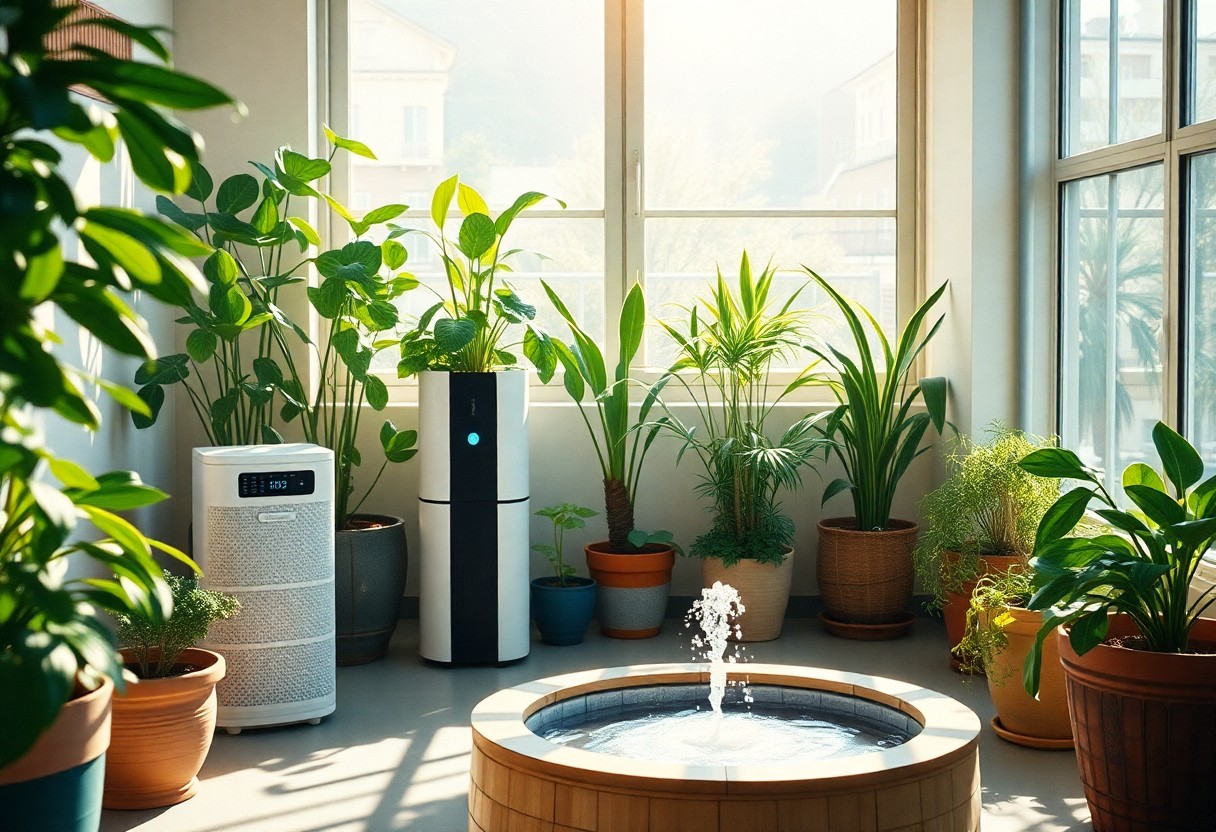
Natural Tips for Improving Indoor Air
Once again, improving the air quality in your home is imperative not just for your overall well-being but also for the health of your skin. There are numerous natural ways you can enhance the indoor atmosphere, such as ensuring proper ventilation, using natural cleaners, and eliminating clutter that can trap dust and allergens. Consider implementing these strategies:
- Incorporate houseplants that are known for their air-purifying abilities.
- Opt for natural cleaning products instead of chemical-laden options.
- Keep your windows open when weather permits to allow fresh air to circulate.
- Utilize air filters in your HVAC system to trap allergens.
- Place bowls of baking soda in your home to naturally absorb odors.
Knowing how to effectively create a healthier indoor environment will lead to noticeable improvements in your skin and overall health. For more tips, check out 12 Ways to Get Clean Air Without Chemicals.
Houseplants for Air Purification
The incorporation of houseplants can significantly elevate the quality of your indoor air. Certain plants, including spider plants, peace lilies, and Boston ferns, act as natural air purifiers by absorbing toxins and releasing oxygen. This not only enhances the air you breathe but also positively affects your skin by reducing the allergens that can cause irritation and breakouts. For more insights, explore Top 7 Houseplants for Better Indoor Air Quality.
To maximize their benefits, make sure to place your houseplants in areas with adequate sunlight and water them according to their specific needs. Adding these green companions to your living space contributes not only to better air quality but also boosts your home’s aesthetic appeal, creating a calming environment conducive to better skin health. For placement tips, check out 5 Best Spots to Keep Your Air-Purifying Plants.
Essential Oils and Their Benefits
The benefits of using essential oils go beyond just delightful aromas; they possess numerous properties that can enhance air quality. Certain oils, like eucalyptus, lavender, and tea tree, are known for their antimicrobial and anti-inflammatory effects. By diffusing these oils in your home, you can purify the air while also creating a soothing atmosphere that may help alleviate stress and promote skin health. For tips on using oils, visit Top 10 Essential Oils for Air Purification.
Oils such as lavender are particularly beneficial for soothing skin irritations, while tea tree oil can help combat breakouts due to its antibacterial properties. It is vital to ensure that you use high-quality, pure essential oils to gain their maximum benefits while avoiding potentially negative reactions. Engaging with essential oils enables you to improve your indoor air quality while nurturing your skin. For safety tips, check out 7 Best Practices for Using Essential Oils Safely.
Step-by-Step Guide to Enhancing Indoor Air
Unlike many indoor air improvement techniques that rely on harsh chemicals or expensive gadgets, you can cultivate a healthier environment using simple, natural methods. This guide will break down the process into manageable steps, allowing you to enhance your indoor air quality effectively and sustainably. You’ll discover how to assess your current conditions, implement natural solutions, and maintain the improvements for the long term.
Assessment of Current Air Quality
| Action | Details |
|---|---|
| Check for Allergens | Identify common sources of allergens, like pet dander, dust mites, and mold. |
| Measure Humidity Levels | Use a hygrometer to ensure your indoor humidity levels are between 30-50%. |
| Assess Ventilation | Evaluate if your home has adequate ventilation, such as open windows or air vents. |
| Monitor Air Quality | Consider using an air quality monitor to detect pollutants like VOCs and particulate matter. |
Assessing Your Current Air Quality
An essential part of improving your indoor air is understanding its current state. Begin by identifying any potential sources of pollution or allergens present in your living spaces. This involves detecting items such as dusty furniture, damp areas that could foster mold growth, and checking for any pet-related allergy triggers. By having a clear picture of what’s affecting your air quality, you can tailor your solutions more effectively. For guidance, explore 7 Steps to Identifying Indoor Air Pollutants.
In addition to identifying allergens, monitoring humidity levels is paramount. A hygrometer can show if your home is too dry or too humid. Ideally, you want humidity between 30-50%, as levels outside this range can lead to respiratory issues and skin problems. Lastly, take note of your ventilation; ensure that air can flow freely throughout your home to dilute pollutants. For tips on maintaining humidity levels, check out Top 5 Ways to Balance Indoor Humidity.
Implementing Natural Solutions
On your journey toward better indoor air, implementing natural solutions can be remarkably rewarding. Begin with adding indoor plants, which can improve oxygen levels and absorb harmful toxins. Choose plants known for their air-purifying qualities, such as spider plants and peace lilies. Additionally, consider using natural air fresheners, such as essential oils, which can replace synthetic fragrances that often contain harmful chemicals. For ideas, visit 10 Best Air-Purifying Plants for Your Home.
Step by step, you can enhance your indoor air quality using natural remedies. Start by decluttering your spaces, as clutter can trap dust and allergens. Next, introduce air-purifying plants, incorporating at least one plant per room to maximize their benefits. Utilize natural cleaning solutions like vinegar and baking soda to minimize chemical exposure, while regularly vacuuming with a HEPA filter to capture smaller particles. Incorporating these practices not only helps improve your air quality but also protects your skin from dryness and irritation caused by poor air. Be diligent in your efforts, and you will enjoy the benefits of cleaner air that promotes healthier skin. For cleaning tips, explore 7 Natural Cleaning Solutions for Better Air Quality.
Pros and Cons of Natural Air Improvement Methods
Your journey to enhance indoor air quality can entail several natural methods, each with its own set of advantages and shortcomings. Understanding these can help you decide which options align best with your health and skin improvement goals. Below is a structured overview of the pros and cons of various natural air improvement strategies:
| Pros | Cons |
|---|---|
| Improves air quality through safe, natural methods. | Effects can be slower to manifest than chemical alternatives. |
| Enhances skin health by reducing irritants. | Some methods may require ongoing maintenance. |
| Can be more cost-effective in the long run. | May not eliminate all indoor pollutants. |
| Utilizes plant life, enhancing home aesthetics. | Allergies to plants could be a concern. |
| Fosters sustainability and eco-friendliness. | Not all natural methods are widely studied for effectiveness. |
| Boosts overall wellness and mood. | Some methods might be less convenient. |
| Minimal exposure to harmful chemicals. | Requires knowledge to implement effectively. |
| Potentially reduces heating and cooling costs. | Perceptions of overall air quality may vary. |
For more insights and Natural Ways to Improve Indoor Air Quality, it’s crucial to weigh these details carefully. Each method has a unique footprint on your living space and personal well-being, so evaluation is necessary for the best outcome.
Benefits for Skin and Overall Health
Some natural methods for improving indoor air quality can provide remarkable benefits for your skin and overall well-being. For instance, increased humidity from plants can help keep your skin hydrated, reducing dryness and irritation. Additionally, purifying indoor air by removing allergens and toxins can lead to fewer breakouts and skin sensitivities. This holistic approach not only helps to create a serene living environment but also supports your body’s internal wellness. For more tips on hydration, check out Top 5 Ways to Boost Skin Hydration Naturally.
Some plants, like Aloe Vera and Peace Lilies, actively combat indoor air pollutants while also benefiting your skin. They release moisture, which can help restore even the driest complexions, and their presence has been shown to impact mood positively. Ensuring that your indoor air is fresh can contribute to glowing, healthier skin, making these methods worthwhile for anyone focused on wellness. To learn more about plant benefits, explore 7 Best Houseplants for Healthy Skin and Air.
Considerations and Limitations
If you decide to pursue natural methods to improve air quality, it’s important to be aware of certain considerations and limitations. While such methods can enhance your living environment, not every strategy is universally effective. Indoor air quality issues may require a combination of multiple approaches for optimal results, especially in homes with prevalent pollutants or allergens. Additionally, you should consider the time investment these methods might require, as well-maintained indoor plants, for instance, can demand your attention. For guidance on indoor air strategies, read 5 Common Mistakes in Improving Air Quality.
The impact of natural methods on air quality often relies heavily on the correct identification of air quality issues. Therefore, it’s wise to conduct thorough research and even consult professionals if necessary. Evaluating your indoor environment’s specific needs will help you tailor your approach—whether it’s selecting the right plants for indoor air purification or implementing air circulation techniques. This proactive approach enables you to maximize your efforts and enjoy the benefits of a healthier indoor atmosphere. For expert tips, visit Top 10 Solutions for Cleaner Indoor Air.
Recommended Best Practices
Maintenance of Indoor Air Quality
Practices aimed at enhancing your indoor air quality play a significant role in promoting healthier skin. Regularly cleaning and dusting your home can drastically reduce allergens and irritants that can lead to skin issues. Consider using HEPA filters in your heating and cooling systems to trap allergens, dust, and other particles that can compromise air purity. Additionally, ventilating your space by opening windows or using exhaust fans helps to circulate fresh air and prevent the buildup of indoor pollutants. For more tips, explore Top 7 Practices for Cleaner Indoor Air.
Furthermore, incorporating houseplants into your environment can not only beautify your living space but also aid in improving air quality. Plants like spider plants, peace lilies, and bamboo palms are known for their air-purifying properties. When you maintain a clean and well-ventilated home, you also create an environment that is less likely to contribute to skin irritations, making it imperative for your overall skin health. For plant recommendations, check out 5 Best Houseplants for Air Purification.
Lifestyle Adjustments
Indoor air quality is significantly influenced by lifestyle adjustments that you can easily implement. You should aim to minimize the use of chemical-heavy household products, opting instead for natural alternatives that are less likely to release harmful volatile organic compounds (VOCs). Items such as air fresheners, candles, and spray cleaners can introduce irritants into your living space, impacting both your skin and respiratory health. By making these switches, you not only enhance the air quality but also protect your skin from unnecessary exposure to damaging chemicals. To learn more, visit 7 Natural Alternatives to Reduce Indoor VOCs.
Recommended adjustments include establishing a no-shoes policy in your home, which helps to prevent dirt and pollutants from entering your living space. Additionally, keeping humidity levels in check—ideally between 30-50%—can protect your skin. High humidity can lead to mold growth and exacerbate skin conditions, while too low of a humidity level can dry out your skin. Utilizing a dehumidifier or humidifier can effectively manage your home’s humidity levels. When you actively engage in these lifestyle modifications, you contribute to a healthier living environment, thus promoting better skin health. For humidity control tips, explore Top 10 Tools for Managing Indoor Humidity.
To wrap up
Drawing together the various strategies discussed, enhancing your indoor air quality is important for promoting healthier skin. By integrating houseplants, maintaining optimal humidity levels, and improving ventilation, you create an environment that opens the door to better skin health. These natural solutions not only purify the air but also contribute to overall well-being, helping your skin thrive amidst the challenges posed by indoor environments.
As you adopt these practices, observe how your skin responds to the changes in your indoor air quality. By prioritizing natural ways to improve your environment, you are taking an important step toward nurturing your skin and achieving a radiant complexion. Ultimately, the air you breathe plays a significant role in your skin’s appearance, and investing in its quality can lead to lasting improvements in your skin’s health and vitality.
FAQ:
Q: How can I improve indoor air quality to benefit my skin health?
A: Improving indoor air quality can significantly impact your skin health. Start by incorporating indoor plants, such as spider plants or peace lilies, which can naturally filter toxins from the air. Ensuring proper ventilation by opening windows regularly and using exhaust fans in areas like kitchens and bathrooms also helps. Reducing indoor humidity with dehumidifiers can prevent mold growth that can irritate the skin. Lastly, consider using air purifiers with HEPA filters to trap airborne particles, contributing to a healthier indoor environment. For more tips, visit 7 Ways to Enhance Air Quality for Healthy Skin.
Q: What types of indoor plants are best for enhancing air quality?
A: Certain indoor plants are particularly effective at improving air quality. Some popular options include snake plants, spider plants, and peace lilies. These plants can absorb pollutants and release oxygen, which can help create a fresher atmosphere that benefits skin health. Additionally, aloe vera is not only great for skin but also helps purify the air, making it a dual-purpose plant for your home. For recommendations, explore 5 Best Indoor Plants for Skin and Air Health.
Q: How does humidity affect my skin and indoor air quality?
A: Humidity plays a significant role in both skin health and indoor air quality. Low humidity can lead to dry skin, making it prone to irritation and cracking. Conversely, high humidity can promote the growth of mold and dust mites, which can exacerbate skin conditions like eczema. Maintaining indoor humidity levels between 30-50% is ideal. You can use a hygrometer to monitor levels and utilize humidifiers or dehumidifiers as needed to strike the right balance. For detailed insights, read Top 10 Humidity Management Tips for Healthy Skin.
Q: What are some natural methods to reduce indoor dust and pollutants?
A: To reduce indoor dust and pollutants, adopt a regular cleaning routine. Dust surfaces with microfiber cloths that trap particles, and vacuum carpets and upholstery frequently using a vacuum with a HEPA filter. Minimizing clutter can also help reduce dust accumulation. Additionally, consider using natural cleaning products to avoid introducing harmful chemicals into the air. Regularly washing bedding and curtains can also help keep allergens and dust at bay, further enhancing air quality for healthier skin. For more ideas, check out 7 Natural Methods to Reduce Dust Indoors.
Q: Are there any specific habits I should adopt to maintain better indoor air for my skin?
A: Yes, adopting certain habits can help maintain better indoor air for improved skin health. First, ensure you have good ventilation by airing out your living spaces regularly. Avoid smoking indoors and limit the use of candles and incense that can release pollutants. Additionally, try to reduce the use of aerosols and synthetic fragrances by opting for natural alternatives. Finally, make it a habit to check and replace air filters in your heating and cooling systems routinely to keep the air clean and fresh continuously. For a complete guide, visit Top 7 Habits for Cleaner Indoor Air.

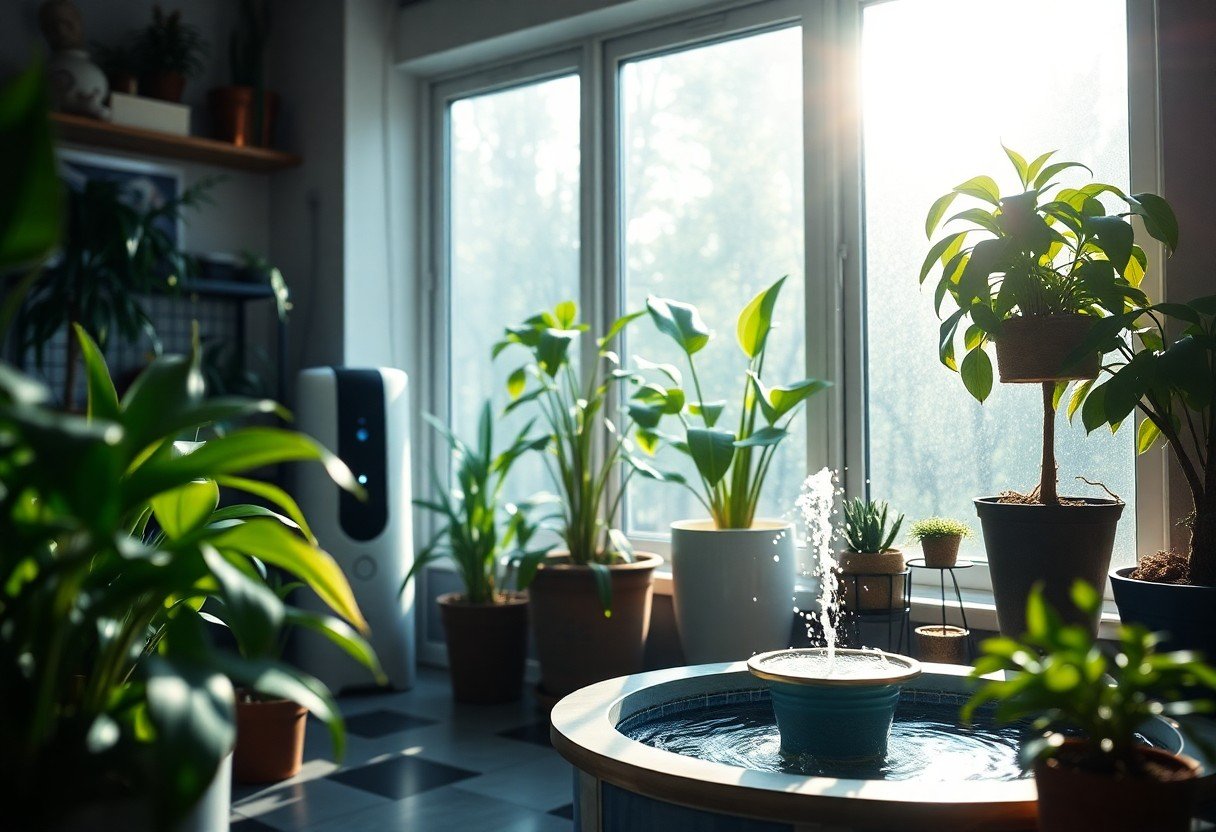




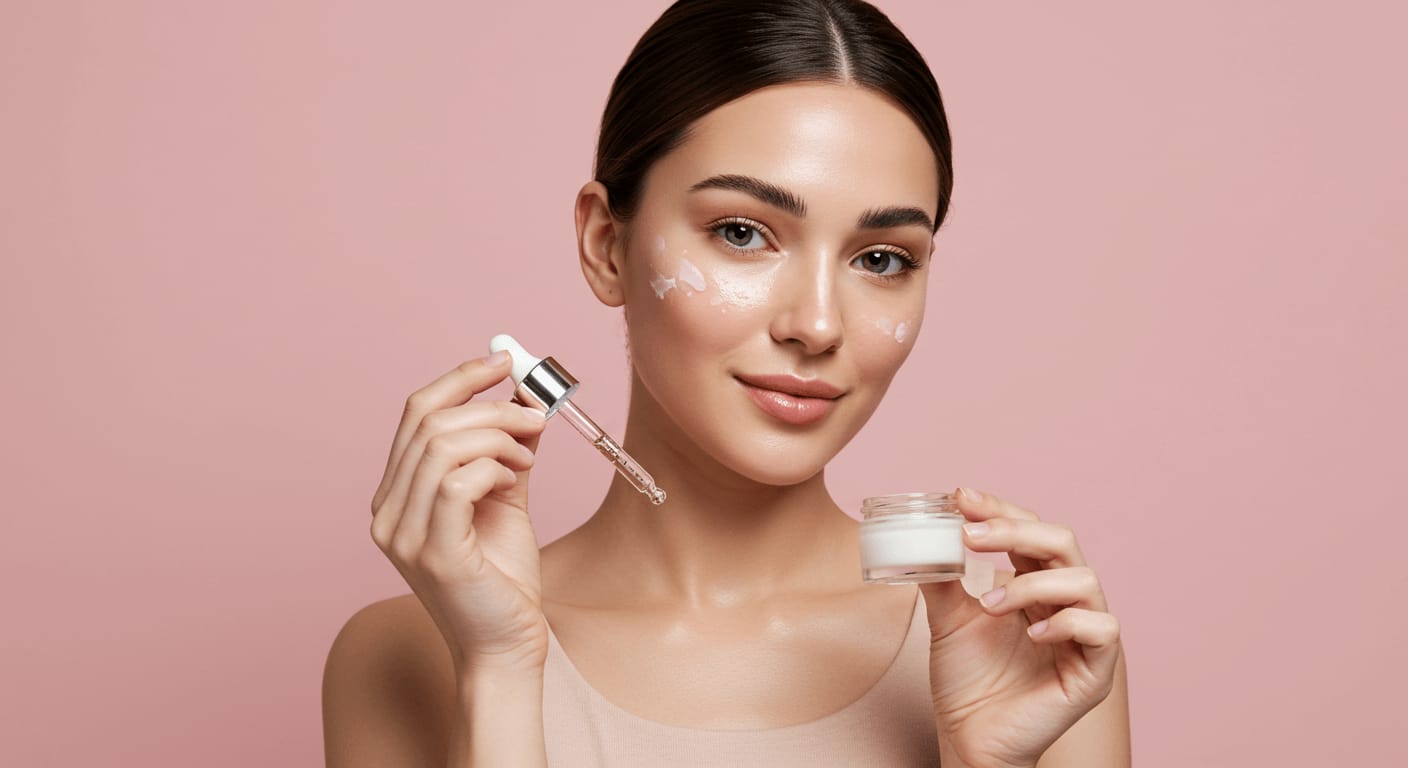









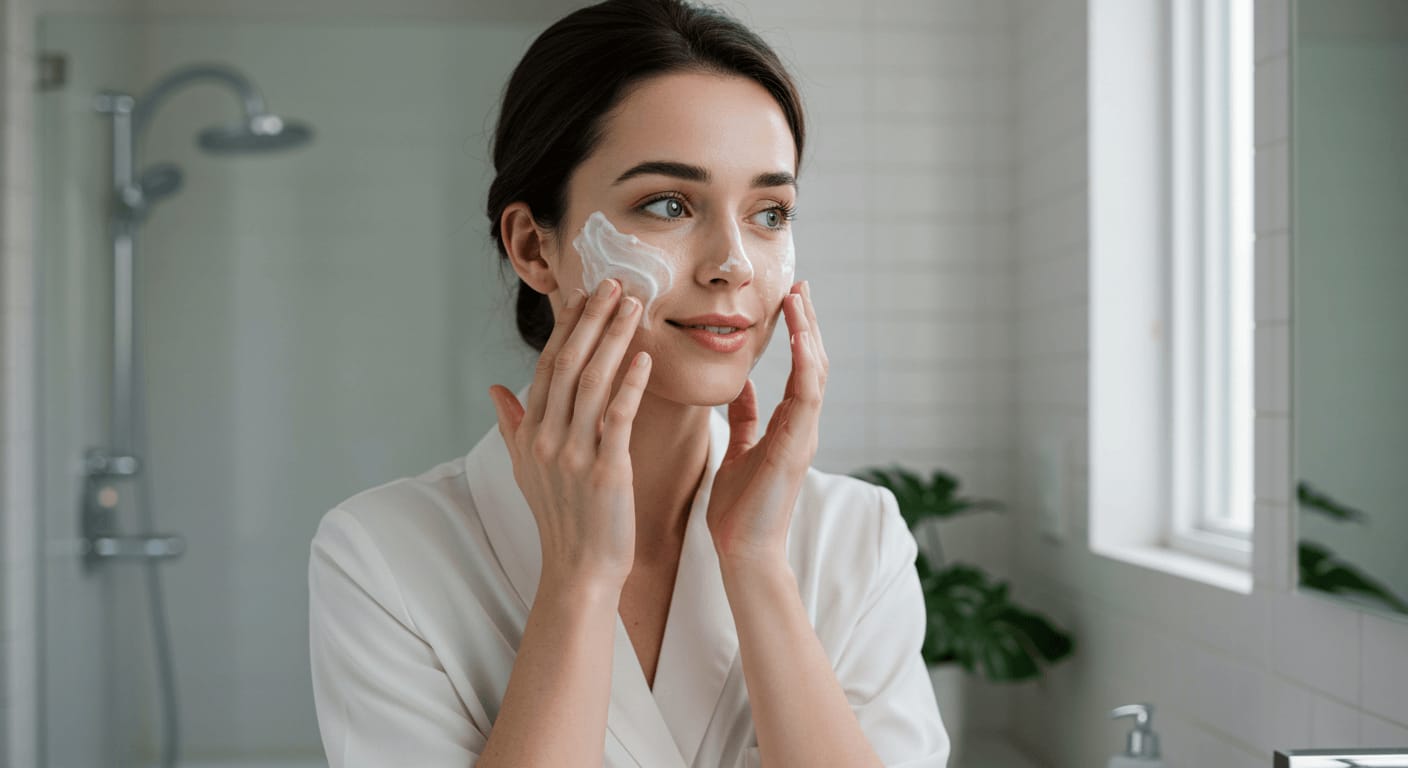








0 Comments